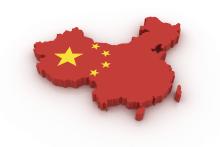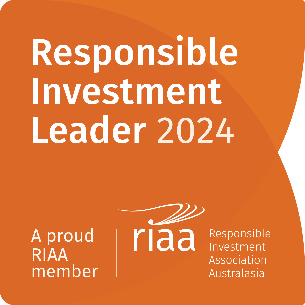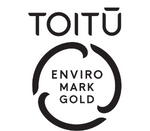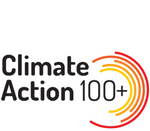Research Trip to China

The Devon investment process is based upon fundamental research that requires us to spend a great deal of time away from the office visiting many companies, and sectors and across a range of countries. We believe this is the very best way for us to understand and manage investment risk. As part of this research program we have recently had a number of our investment team members in China on different research trips. When managing NZ and Australian investments, it is critical to understand what is happening in this market. China is not only the worlds’ second largest economy but it is also New Zealand and Australia’s largest trading partner and its economic performance is very important to investor sentiment in local share markets. While our stock picking is very much based on “bottom up” analysis, the China visit allows us to learn first-hand about trends, risks and opportunities in this country. After a period of strong growth in China and volatile, but generally rising commodity prices, Portfolio Manager Tama Willis recently spent a week in Beijing, Shanghai and Tangshan attending presentations, talking to companies and commodity experts along with other investors from the US, Hong Kong, the UK and Australia.
We last conducted a Resources focused trip to China in March 2017 when their economy was accelerating – GDP increased 6.9% in 2017. This time the outlook was more measured but probably in line with the government’s 2018 target of around 6.5% growth. At the end of the trip the US government increased market anxiety by announcing that tariffs will be imposed on US$60bn of imports from China but the general view was that their response will likely remain restrained (for now) to avoid escalation. If an escalation did occur though, most analysts expect that the Chinese government would probably increase their investment spend to support domestic growth. From a long-term perspective, there were two notable themes from the trip.
Firstly, the government has accelerated its focus on restructuring the economy, cleaning up the environment and improving air quality. We picked up numerous anecdotes including evidence that households and industries are switching to natural gas (from coal), companies are shifting manufacturing capacity out of the key cities, the upgrading of environmental technology at power stations is occurring, and there is increasing incentives being implemented to encourage uptake for electric vehicles. Although environmental repair is one of the highest priorities for the Chinese government it will take time to wean China off the 3.6 billion tons tonnes of thermal coal it consumes each year.
Secondly, regulators have recently issued many new directives aimed at reducing financial sector leverage including tighter controls on shadow banking and wealth management products. Also in the corporate arena, the focus on reducing capacity in indebted industries like coal and steel and a government engineered pick-up in property sales has significantly improved profitability and reduced corporate debt, thus improving the health of the banking system. One area to watch though is rising debt levels at the household sector. According to the Bank for International Settlements, as of mid-2017 (the latest data available), Chinese households had debts worth about 106% of their disposable incomes which is up from around 60% in 2010. While still manageable this is an emerging risk to watch over the medium term. For example, we met with Shudong Development Bank and their credit card business grew 40-50% in 2017.
Shorter term, the visit confirmed the demand recovery post Chinese New Year (CNY) was slower than expected. Key reasons cited by a range of executives were the later start to CNY and the delayed return of migrant workers from holiday, winter related production restrictions on polluting industries (e.g steel, alumimium) and construction sites and finally the extended National People’s Congress (NPC) where the party removed presidential term limits from its constitution. As a result inventories across a number of commodities were higher than normal. Following the trip, the normal seasonal recovery has started with construction project restarts, a strong outlook for machinery and equipment sales and continued growth in infrastructure and property investment. Risks for the commodities sector will emerge again in the second half of the year as we head into the normal winter shutdown period.
Overall capital investment growth rates across the economy should moderate in 2018 but continued growth is needed to meet the governments GDP growth target of 6.5%. China State Construction Bank (CSCB), a construction firm with a 10% market share in China and a RMB3.4 trillion (NZ$700bn) backlog, highlighted that new orders rose 97% and 35% yoy in January and February respectively. CSCB also expects government infrastructure investment to see a double digit increase in 2018. Sany, the sixth largest global heavy machinery manufacturer, is looking for domestic growth of 15-30% in 2018 due to strong demand from the infrastructure sector and environmental related equipment upgrades (a push for lower emissions). There were mixed views on the Chinese property sector but consensus is looking for flat to declining sales growth as the government is implementing tighter mortgage conditions. Housing starts though, should show a modest increase with 5.8M units of rental housing development providing support.
While capital investment across the economy is likely to slow this year, the consumer is in good shape. Fourth quarter 2017 retail sales growth remained resilient at 9.9% yoy (vs 10.3% in the third quarter). Also there appears to be solid sales growth across the service sector. For example, in 2017 China recorded 589 million air passengers, up 12.6% yoy and passenger volumes are forecast to rise 11% this year to 612 million. Also strong was China’s movie box office which rose 30% in 2017 to US$8.6bn. China's box office totaled around US$3.2 billion in the first three months of this year - up 40 per cent year on year. In comparison, North America's box office (comprising U.S. and Canada) totaled US$2.89 billion in the same period. We have direct exposure to the growth in China’s cinema through our holding in Vista Group.
China and US box office (US$bn)

Importantly from the trip we believe that while near-term commodity demand has been softer than expected the normal seasonal recovery should prove supportive to commodity prices through the second quarter. The focus on supply side reform and reducing pollution means that high quality iron ore should remain in good demand and sits with our preference at Devon for the most high quality mining names. We are neutral the Resources sector overall and our preferred exposure is BHP Billiton. It has an attractive commodity mix in oil, copper, iron ore and coking coal and is in an earnings upgrade cycle. The group is divesting its US onshore oil & gas assets which analysts believe could be fetch up to US$10bn. At around 13-14x earnings and 6x EBITDA with capital return potential the risk/reward is still positive.
Understanding China is an enormously difficult task but at Devon we believe that these regular, intensively focused research trips are essential in helping us to build institutional knowledge of the key sectors that influence Australian and New Zealand share markets. This most recent trip is a good example of the depth of research we aim to undertake and are hopeful that it has provided us with a range of useful insights that will support us in achieving positive outcomes for our clients.





